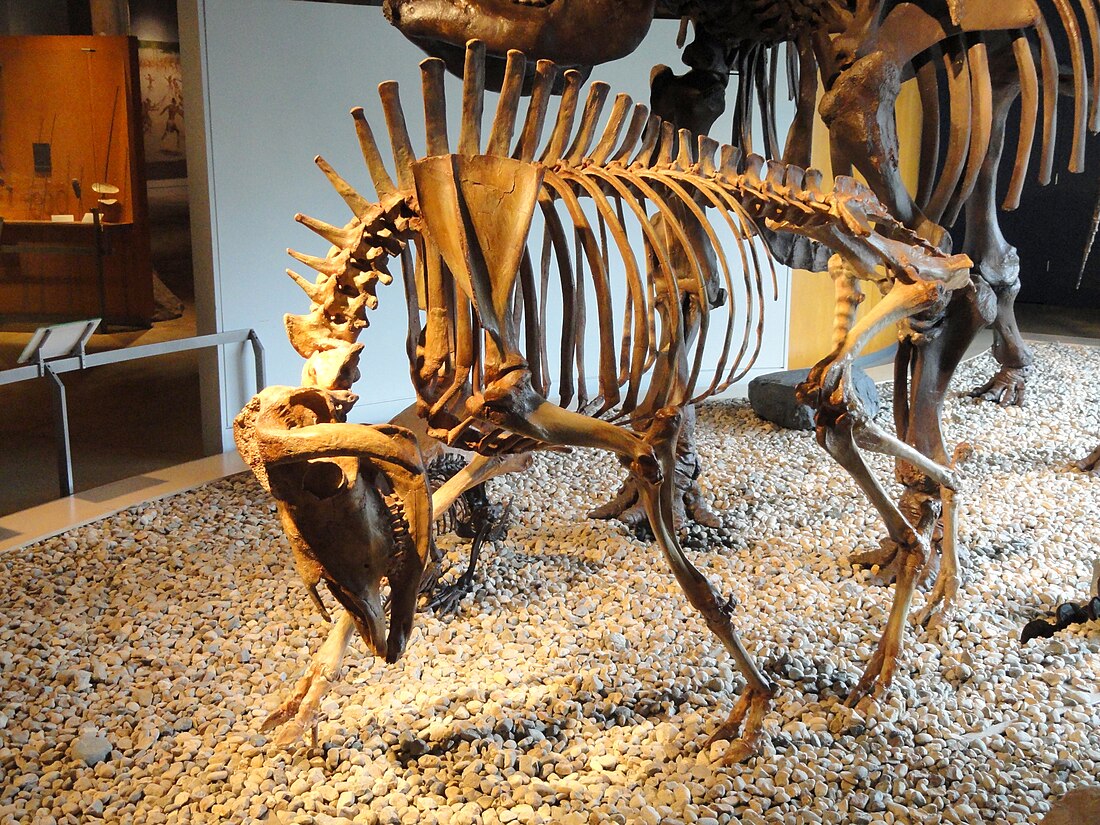Top Qs
Timeline
Chat
Perspective
Bootherium
Extinct genus of bovid mammal From Wikipedia, the free encyclopedia
Remove ads
Bootherium (Greek: "ox" (boos), "beast" (therion)[1]) is an extinct bovid genus from the Middle to Late Pleistocene of North America which contains a single species, Bootherium bombifrons.[2] Vernacular names for Bootherium include Harlan's muskox, woodox, woodland muskox,[3] helmeted muskox,[4] or bonnet-headed muskox.[5]
Remove ads
Taxonomy

Symbos was formerly thought to be a separate genus, but is now known to be synonymous.[6] Its closest living relative is the muskox (Ovibos moschatus), from which it diverged around 3 million years ago.[7] It is also closely related to the contemporaneous extinct genus Euceratherium.[8][9]
Description
Unlike today's Arctic and tundra-adapted muskoxen, with their long, shaggy coats, Bootherium was physically adapted to a range of less frigid climates, and appears to have been the only species of muskox to have evolved in and remain restricted to the North American continent (the Arctic muskox's range is circumpolar, and includes the northern reaches of Eurasia as well as North America).[3] Bootherium was significantly taller and leaner than muskoxen found today in Arctic regions. Bootherium were estimated to weigh around 423.5 kg (934 lb).[10] Other differences were a thicker skull and considerably longer snout. The horns of Bootherium were situated high on the skull, with a downward curve and were fused along the midline of the skull, unlike tundra muskoxen whose horns are separated by a medial groove.
Remove ads
Distribution
Bootherium was one of the most widely distributed muskox species in North America during the Pleistocene epoch. Fossils have been documented from as far north as Alaska[11] to Alberta,[12] Montana,[13] California, Utah,[14] Texas,[15] Missouri, Indiana,[16] Ohio,[17] Michigan,[18] Oklahoma, Virginia, North Carolina and New Jersey. The species went into decline, and eventual extinction, approximately 11,000 years ago, at the end of the last Ice Age.[3]
Notes
References
External links
Wikiwand - on
Seamless Wikipedia browsing. On steroids.
Remove ads

